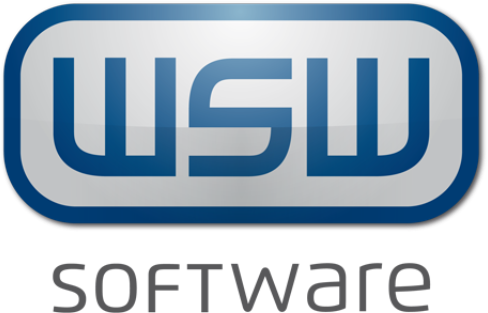Key performance indicators (KPIs) can be used to monitor a company's production. Transparency is created with regard to performance, weak points and potential for improvement. Some KPIs are particularly important for production. These are examined in more detail here.
What are production ratios?
Production metrics or production KPIs are precisely defined indicators for monitoring, analyzing and optimizing production processes. They can relate to quality, quantity and dimensions such as time, costs and sales. Particularly important production KPIs are key performance indicators. Which key performance indicator is ultimately defined as a key performance indicator depends on the respective requirement of the user in the context of the evaluation.
By comparing and interpreting key figures, companies have the opportunity to assess the following issues, for example:
- Are the production processes efficient?
- Does efficiency improve or deteriorate over time?
- Where does your own production stand compared to the competition?
- At which points are optimizations necessary and sensible?
- Where is the potential for cost reduction?
- How can the quality of the products be increased?
- How can a shorter delivery time be realized?
What are the advantages of key figures in production?
In production, key figures play a major role in ensuring efficient operation. Key figures and evaluations simplify the monitoring of processes as well as production controlling and the analysis of costs. The results thus provide a clear and concise basis for decision-making. Even complicated issues, causes and effect relationships can be evaluated correctly with suitable production key figures.
Reliable key figures allow a well-founded assessment of the status and performance of production processes. In addition to supporting decision-making, they also serve to determine the degree to which targets have been achieved. Furthermore, production KPIs can be used for external and internal benchmarking. Especially in the context of lean management and continuous improvement, production KPIs are indispensable.
Top 10 key figures in production
Different types of key figures exist in production. Some are global, others are used to assess details. Some provide information for strategic decisions, others enable monitoring of day-to-day operations.
The following are among the particularly important key figures in production:
- Production volume
- Production costs
- Production defects
- Production downtime
- Right First Time
- Return rate
- Lead time
- Maintenance costs
- Capital turnover
- Overall Equipment Effectiveness (OEE)
- Overall Operations Effectiveness (OOE)
- Net overall equipment effectiveness (NEE)
These production KPIs are described in more detail below:
Production volume
Production volume is one of the most obvious key figures in manufacturing. It provides information about the number of units completed in a specific period (shift, week, month, quarter, etc.). Usually, at this point it is also evaluated how many products of the total production were not produced without defects. This would then be called the reject rate. In the case of expensive products, this key figure can be a KPI, since rejects in this case cause high costs.
When a production volume can be classified as optimal depends on many factors. These include, for example, the value and turnover rate of the parts produced, the storage costs of the inventories and the changeover times of the machines.
Production costs
Production costs comprise all material costs and manufacturing costs that a company incurs in order to complete its products. As a rule, production costs are divided into the following cost types from a business management perspective:
- Direct material costs: Costs for raw materials and components
- Material overheads: Costs that cannot be directly allocated to the product (e.g. operating materials, energy costs).
- Direct production costs: Production wages
- Production overheads: general costs such as rent for the production hall or salary of foremen
Those who monitor and examine these cost types in detail can identify and tap potential savings.
Production defects
This key figure is important for internal quality control. It indicates what proportion of total production has defects. Since permanently occurring defects in particular cause high costs and reduce profits, it is of high importance to eliminate the causes of defects. Ideally, this should be done until the defect rate is at least equal to the industry average.
Production downtime
The number and duration of (unplanned) production downtimes is also a production KPI relevant to success. The reasons for such disruptions can be machine failures and also cases of illness. Since production downtimes cause high costs, they should be kept as low as possible. This can be achieved through detailed monitoring, identification of weak points, suitable maintenance strategies and employee training.
Right First Time
Another important key figure in production is Right First Time. It reflects the proportion of products that pass internal quality control without any defects in the first run. High values for this key figure indicate an efficient, high-quality production process.
Return rate
The return rate provides information on how many of the products manufactured and sold are returned by customers. Causes can be defects in production on the one hand, and subjective aspects (e.g. unappealing design) on the other. If return rates are high, the reasons for return should be analyzed in order to derive improvement measures.
Lead time
The cycle time is the difference in time between the start and end of production. The starting point of the process is the setup of the machine. This is followed by production and transport of the product. Finally, the end is marked by storage.
Companies should always strive to reduce their lead times, as this reduces the amount of capital tied up. Possible starting points are idle times, transport times and, of course, production times.
Maintenance costs
Maintenance costs are costs that are used to maintain plant and machinery in production. In detail, they consist of costs for maintenance, inspection, repair and improvement. The goal should be to keep maintenance costs as low as possible, but without jeopardizing the functionality of production machinery. This is made possible, for example, by modern approaches such as condition monitoring and predictive maintenance.
Capital turnover
Capital turnover is a financial indicator that is particularly relevant for manufacturing companies. This is because expensive machines (= capital employed) are generally used in this industry. At this point, the capital turnover answers the question of how much revenue is generated from the capital employed. The higher the value, the better.
Overall Equipment Effectiveness
The Overall Equipment Effectiveness (OEE)is an important global indicator in production. It includes the dimensions of availability, performance and quality. OEE indicates how effective a production plant (or parts of it) are overall.
For most manufacturing companies, Overall Equipment Effectiveness is the standard to visualize equipment availability, make problems visible and initiate improvement measures.
Example for the calculation of the OEE
Overall Equipment Effectiveness measures the current availability and value-added status of a plant. For this purpose, it considers the following dimensions:
- Plant availability (AV)
- Power level (LG)
- Quality Rate (QR)
The OEE results when these three values are multiplied together. The OEE formula is therefore as follows:
OEE = plant availability x performance level x quality rate
The basis for the OEE calculation is the planned operating time of a plant, which is defined as 100 percent. Unplanned downtime is taken into account for plant availability. In our example, we assume that the availability of the plants is 89 percent.
The degree of efficiency provides information about the losses due to reduced output of the plant. It can never be 100 percent, as machines cannot run at maximum speed all the time. For our example, we assume a performance level of 91 percent.
The quality rate reflects the loss due to the production of defective products. If no defects occur at all, it is 100 percent. For our example calculation, we assume that the quality rate is 92 percent.
Now that all values are available, the OEE can be calculated using the above formula:
OEE = 89 percent x 91 percent x 92 percent
Result: Overall equipment effectiveness is 74.51 percent.
The majority of production companies operate in an OEE range of 65 to 85 percent. In this respect, the result of our example can be considered solid.
Overall Operations Effectiveness (OOE)
When looking for the difference, it can be seen that OOE and OEE differ in their definition of availability. In OEE, availability is defined as the time in which a machine is in operation compared to the total planned operating time. If the total planned operating time is achieved, this is considered to be maximum availability.
The OOE, on the other hand, defines availability as the time during which a machine can be in operation in a shift. It makes no distinction between planned and unplanned time. Accordingly, the total time available is regarded as the maximum availability. This is, for example, the total duration of a day shift.
The following formula is used to calculate the OOE:
OEE availability = machine running time / shift duration
Net overall equipment effectiveness (NEE)
As an alternative to OEE, net overall equipment effectiveness (NEE) can also be calculated.
The calculation of the total equipment effectiveness NEE consists of the following factors:
- Availability VF (availability)
- Performance rate LF
- Quality rate QF (quality rate)
and is calculated as follows:
NEE= VF x LF x QF
Planned downtimes are included in the "total effective plant productivity". As a measured value, this represents a combination of overall plant effectiveness and plant utilization.
The NEE is 100% for maximum effectiveness and 0% for non-existent effectiveness. Companies that achieve a very good value are usually at percentages above 85 percent, but often the value is in the range of 50 percent.
Conclusion
All in all, production KPIs are an ideal basis for optimizing and increasing efficiency in manufacturing. Suitable KPIs exist for almost every factor that influences the success of a production operation. If these are combined as required and continuously monitored, continuous improvement can be achieved. Despite the enormous advantages, KPIs should never be used inflationarily in production. Rather, the rule of thumb is: as few production KPIs as possible, as many as necessary. In this context, it is the task of controlling to select the appropriate KPIs. What these are depends on the industry and the individual goals of a company.
FAQ
We explain the most important terms in the context of key figures in production here:
KPIs in production are indicators or key figures for analyzing and monitoring manufacturing companies and their production. They evaluate production environments and processes in terms of time, costs, turnover, quantity and quality.
Key figures in production create transparency regarding strengths, weaknesses and problems in manufacturing. They are therefore an important basis for decision-making and a significant reference point for improvement measures.



